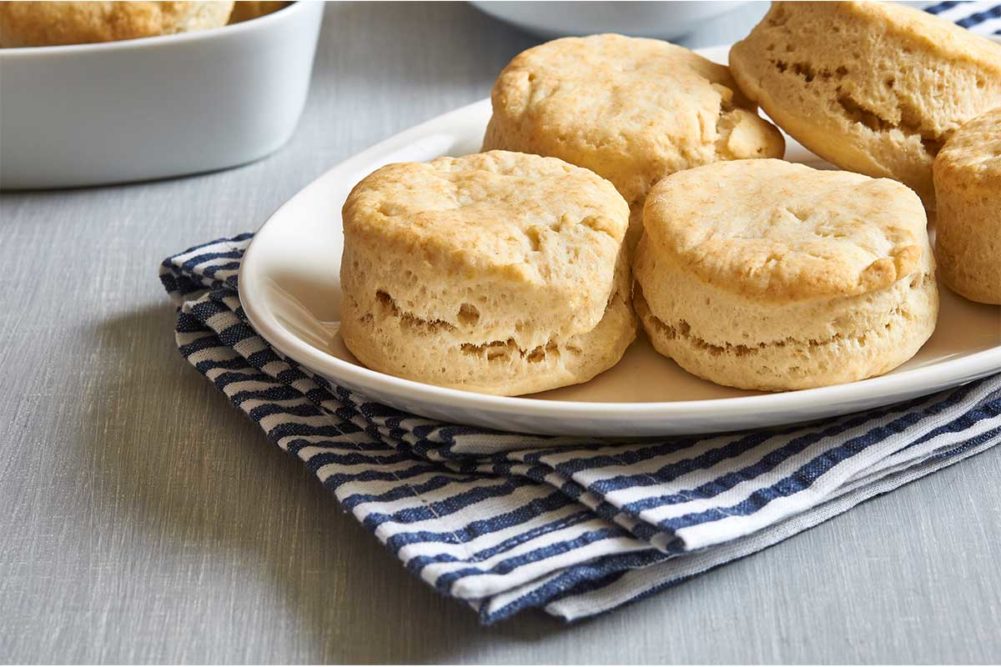Choosing the right ingredients for chemical leavening in frozen doughs and batters is critical, but bakers can optimize these ingredients’ performance through their processing strategies. Once acids and bases are mixed with water, the chemical reaction starts up, and different conditions can determine whether that slows down or speeds up.
“High process temperatures, long floor times, and slow freezing and thawing will result in the increased reaction between the sodium bicarbonate and the acids,” explained Mary Thomas, senior R&D manager, Lesaffre Corp. “This could result in too much leavening occurring too early in the process and not enough left to give the final rise in the oven.”
Controlling these factors outside of the formulation helps bakers make the most of their ingredients. Starting at the mixing bowl, the order of ingredients makes a big difference.
“We recommend separating the soda from the acid when working without a pre-blended leavening system and eliminating direct contact with liquids within the formula,” said Christopher Bohm, senior director of business development, frozen, Corbion. “Whenever possible, disperse any dry ingredients before adding liquid ingredients. This will help mitigate the premature release of leavening gases.”
This separation helps delay hydration and prevent prereactions from occurring, or at least minimizes pre-reaction. Ms. Thomas also suggested bakers limit mixing bowl reactions by reducing the temperature of doughs.
A full understanding of dough or batter formulation that needs to be frozen can help bakers be strategic about their chemical leavening ingredients. By choosing slow-acting ingredients and optimizing their processing, bakers can delay the chemical reaction so their customers can get the most rise in their ovens.
This article is an excerpt from the December 2020 issue of Baking & Snack. To read the entire feature on chemical leavening, click here.





